 문의하기
문의하기
 TOP
TOP

“나는 ‘흙’이라는 재료로 ‘흙의 공간’을 그린다.”
흙은 지나치게 빛나지 않고,지나치게 개념적이지 않으며,
혹은 지나치게 보편적이지도 않다.
“그래서 나는 흙이 좋다.”
오늘날 우리는 참 다양하고도 멋진 현대미술의 홍수 속에 있다.
이 요란스럽고, 복잡하며, 휘황찬란한 미술계의 흐름 속에서,
나는 여기 있는 이 흙처럼, 이렇게 조용히,
그러나 언제나 항상 우리 곁에 있는, 그런 그림을 그리고 싶다.
거대한 포장도, 무거운 개념도, 찬란한 색상도,
모두 그렇게 ‘흙’속에 묻어버리고자 한다.
아주 조용히, 그러나 결코 사라지지 않는 그 ‘무엇’과 같이….
(2006년 작업노트중에서…)
Je peins l’espace de la terre en utilisant de la terre.
La terre n’est pas trop bruyante, ni trop conceptuelle, ni trop générale.
Donc j’aime bien la terre
Aujourd’hui nous sommes submergés par un art contemporain très varié et bruyant.
Contrairement à ces courants trop vifs, je voudrais rester paisible et peindre comme la terre qui est toujours à côté de nous sans parler.
En très calme mais éternel comme ‘la terre’.
(Dans mon cahier de travail en 2006)
채성필
Chae, Sung Pil
(1972~, Korea)
Present
2018 Currently enrolled in Doctoral program in Plastic Arts? Universite Paris 1
09.2005 Master2 (DEA) in Plastic Arts - Universite Rennes2
02.2003 M.A in Oriental Paintings - Seoul National University
02.1998 B.A in Oriental Paintings ? Seoul National University
Solo Exhibitions
2018 Gallery Grimson, Seoul, Korea
2018 Gallery Jean Brolly, Paris, France
2017 Gallery Opera, NY, USA
2017 Gallery Opera, Seoul, Korea
2015 Gallery Red Zone Art, Geneva, Swiss
2015 Gallery Opera, Dubai, UAE
2015 Gallery CC, Seoul, Korea
2015 Gallery Baudoin Lebon, Paris, France
2014 Gallery Shchukin, Paris, France
2014 Caron Bedout, Villeneuve-sur-Yonne, France
2011 Young-Eun Museum, Kwang-Ju, Korea
2010 Gallery Christine Park, Paris, France
2010 Gallery 89, Paris, France
2009 Gallery Sejul, Seoul, Korea
2008 Gallery AROA, Paris, France
2007 Gallery Brasilia, Paris, France
2007 Gallery Saphir, Chevereuse, France
Group Exhibitions
2018 Art Central, Hongkong
2018 Art Paris, Paris, France
2018 Art Brussels, Brussels. Belgie
2018 Artmining DDP, Seoul, Korea
2017 Art Brussels, Brussels, Belgie
2017 BRAFA, Bruxellles, Belgie
2017 Plein et Vide, Kyobo Art space, Seoul, Korea
2016 Art Paris, Paris, France
2016 Art Busan, Busan, Korea
2016 ‘Reminiscing on past time’, YoungEun Museum, Kwangju, Korea
2016 KIAF, Seoul, Korea
2016 CHAE Sung-Pil & Lee JaeSam, Gallery Grimson, Seoul, Korea
2015 Art Paris, Paris, France
2015 Art15 London, London, UK
2015 Art Istanbul, Istanbul, Turky
2015 Art Busan, Busan, Korea
2015 KIAF, Seoul, Korea
2015 Art Elysee, Paris, France
2015 ‘SEOUL PARIS SEOUL’, Cernuschi Museum, Paris, France
2015 SAUNAMU, Cite Internationale des Arts, Paris, France
2014 London Art fair, London, UK
2014 Art Karlsruhe, Karlsruhe, Germany
2014 Art Paris, Paris, France
2014 Busan Art Show, Busan, Korea
2014 Gallery Superior, Seoul, Korea
2013 Gallery Opera, Singapore, Dubai, Hongkong and Seoul
2013 Gallery Opera. Paris, London, Geneva and Monaco
2013 Gallery 89, Paris, France
2013 Art Paris, Paris, France
2013 KIAF(Korea International Art Fair), Seoul, Korea
2013 DeaGu Art fair, DaeGu, Korea
2012 Korea tomorrow, Hangaram Museum(Seoul Art Center), Seoul, Korea
2012 Gallery Opera Seoul, Seoul, Korea
2012 Sonamu, Ara gallery, Seoul, Korea
2012 Sonamu, 89 Gallery, Paris, Korea
2012 DeaGu Art fair, DaeGu, Korea
2012 Doors Hotel Art Fair, Seoul, Korea
2012 Monochrom in Korea, Gallery Dorothea van der Koelen, Mainz, Germany
2012 The rite of spring. Gallery Maubert. Paris, France
2011 KIAF(Korea International Art Fair), Seoul, Korea
2011 Gallery Maubert, Paris, France
2011 Gallery Aroa, Paris, France
2010 Miami Scope, Miami, USA
2011 KIAF (Korea International Art Fair), Seoul, Korea
2011 Korea Gallery Exibition, Daegu, Korea.
2009 CIGE(China International Gallery Exibition), Beijing, China
2009 Chicago Art Fair, Chicago, USA
2009 KIAF (Korea International Art Fair), Seoul, Korea
2009 Art Kwangju, Kwangju, Korea
2008 Chicago Art Fair, Chicago, USA
2008 KIAF (Korea International Art Fair), Seoul, Korea
2008 ART Shanghai, Shanghai, China
2008 Daegu Art Fair, Daegu, Korea.
2005
-2006 International Art Fair Mac2000, Paris, France
현재
프랑스 Mery sur Oise 거주
Paris Universite 1 대학 조형예술학과 박사과정수료
09.2005 조형 예술학 석사 (DEA) - Universite Rennes2
02.2003 서울 대학교 동양화과 석사
02.1998 서울 대학교 동양화과 학사
개인전
2018 갤러리 그림손, 서울, 대한민국
2018 갤러리 Jean Brolly, 파리, 프랑스
2017 갤러리 Opera, 뉴욕, 미국
2017 갤러리 Opera, 서울, 대한민국
2015 갤러리 Red zone, 제네바, 스위스
2015 갤러리 Opera, 두바이, UAE
2015 갤러리 CC, 서울, 대한민국
2015 갤러리 Baudoin Lebon, 파리, 프랑스
2014 갤러리 Shchukin, 파리, 프랑스
2014 갤러리 Caron Bedout, Villeneuve-sur-Yonne, 프랑스
2011 영은 미술관, 광주, 한국
2010 갤러리 Christine Park, 파리, 프랑스
2010 갤러리 89, 파리, 프랑스
2009 갤러리 세줄, 서울, 대한민국
2008 갤러리 AROA, 파리, 프랑스
2007 갤러리 Brasilia, 파리, 프랑스
2007 갤러리 Sapir, Chevereuse, 프랑스
단체전
2018 Art Central, 홍콩
2018 Art Paris, 파리, 프랑스
2018 Art Brussels, 벨기에
2018 아트마이닝, DDP, 서울
2017 Art Brussels, 벨기에
2017 BRAFA, 벨기에의 브뤼셀
2017 Plein et Vide, 교보 아트 스페이스, 서울, 대한민국
2017 Art Central, 홍콩, 중국
2016 Art Central, 홍콩, 중국
2016 아트 부산. 부산, 대한민국
2016 '과거의 추억들'영은 박물관, 광주, 대한민국
2016 KIAF. 서울, 대한민국
2016 채성필과 이재삼, Grimson 갤러리, 서울, 대한민국
2015 Art Paris, 파리, 프랑스
2015 Art15 런던, 런던, 영국
2015 아트 이스탄불, 이스탄불, 터키
2015 아트 부산, 부산, 대한민국
2015 KIAF. 서울, 대한민국
2015 아트 엘리제. 파리, 프랑스
2015 '서울 파리', Cernuschi 미술관, 파리, 프랑스
2015 SAUNAMU 협회전, Cite Internationale des Arts, 파리, 프랑스
2014 London Art fair, 런던, 영국
2014 아트 카를 스루에, 카를 스루에, 가메니
2014 아트 파리, 파리, 프랑스
2014 부산 아트 쇼. 부산, 대한민국
2014 갤러리 슈페리어, 서울, 대한민국
2013 갤러리 오페라, 싱가포르, 두바이, 홍콩, 서울
2013 갤러리 오페라, 파리, 런던, 제네바, 모나코
2013 갤러리 89, 파리, 프랑스
2013 아트 파리, 파리, 프랑스
2013 KIAF (한국 국제 아트 페어), 서울, 대한민국
2013 DeaGu Art fair, 대구, 대한민국
2012 Korea Tomorrow, 한가람 미술관 (예술의 전당), 서울, 대한민국
2012 갤러리 오페라 서울, 서울, 대한민국
2012 소나무, 아라 갤러리, 서울, 대한민국
2012 소나무, 89 갤러리, 파리, 대한민국
2012 DeaGu Art fair, 대구, 대한민국
2012 호텔 아트 페어, 서울, 대한민국
2012 한국의 모노 크롬, 갤러리 Dorothea Van des Koelen, 마인츠, 독일
2012 봄의 의식, 갤러리 Maubert, 파리, 프랑스
2011 KIAF (한국 국제 아트 페어), 서울, 대한민국
2011 갤러리 Maubert, 파리, 프랑스
2011 갤러리 Aroa, 파리, 프랑스
2010 아트 마이애미, 마이애미, 미국
2010 KIAF (한국 국제 아트 페어), 서울, 대한민국
2010 한국 화랑미술제, 대구, 대한민국
2009 CIGE (중국 국제 갤러리 전), 베이징, 중국
2009 시카고 아트 페어, 시카고, 미국
2009 KIAF (한국 국제 아트 페어), 서울, 대한민국
2009 예술 광주, 광주, 대한민국
2008 시카고 아트 페어, 시카고, 미국
2008 KIAF (한국 국제 아트 페어), 서울, 대한민국
2008 아트 상해, 상해, 중국
2008 대구 아트 페어, 대구, 대한민국
2005
-2006 국제 미술 전시회 Mac2000, 파리, 프랑스
작품소장처
국립현대미술관, 영은미술관, 세종시정부청사, 카카오다음, 보령제약, 신한은행, BNP은행, 파리시청, Cernischi 미술관, 마제스틱호텔, 씨트로엥본사 그 외 다수.
 물의초상(portrait d_eau) 119x89cm pigments naturels sur toile 2022
물의초상(portrait d_eau) 119x89cm pigments naturels sur toile 2022
 물의 초상(portrait d'eau 211020) 100x100cm pigments naturels sur toile 2021
물의 초상(portrait d'eau 211020) 100x100cm pigments naturels sur toile 2021
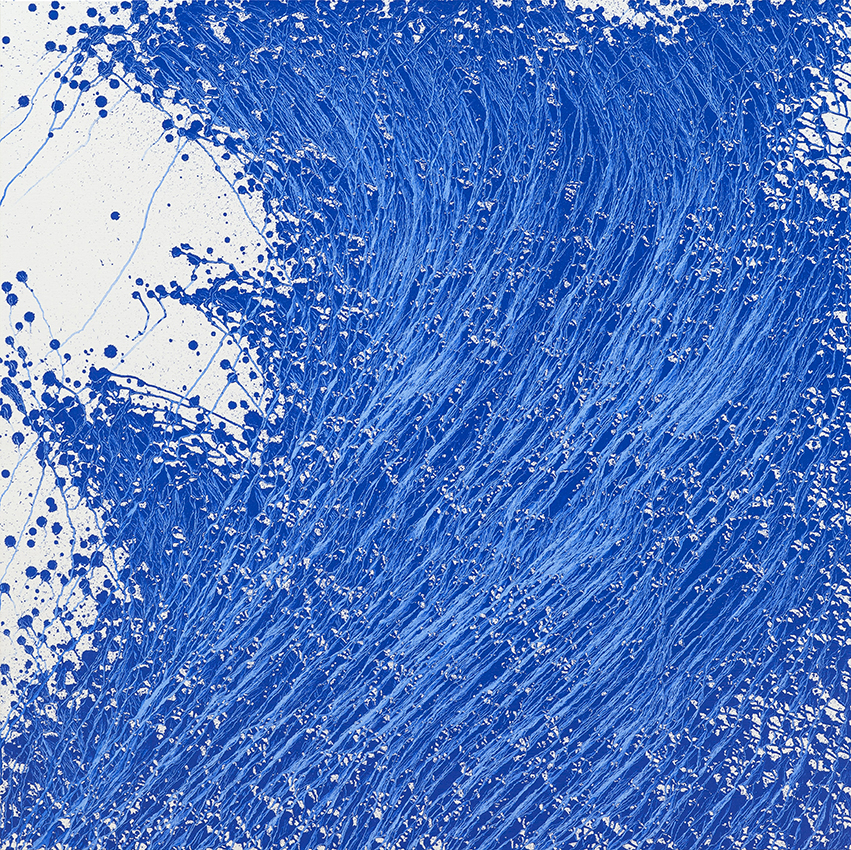 물의 초상(portrait d'eau 211017) 160x160cm pigments naturels sur toile 2021
물의 초상(portrait d'eau 211017) 160x160cm pigments naturels sur toile 2021
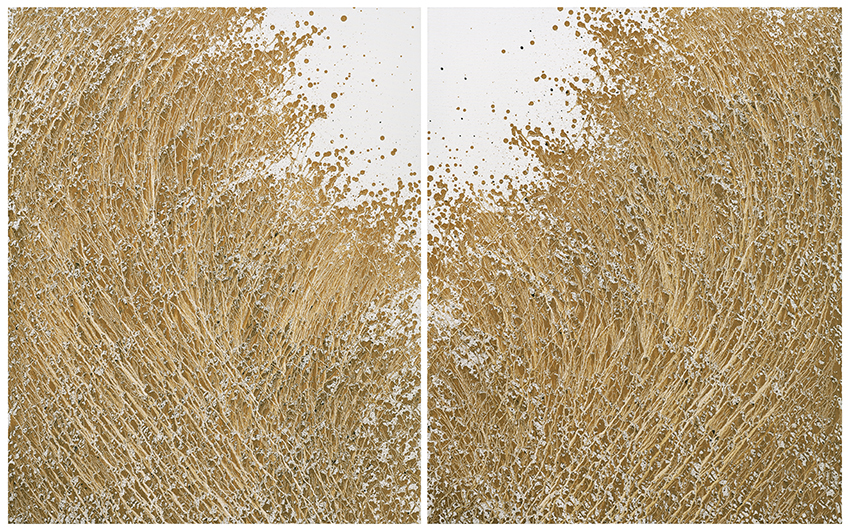 대지의 몽상(rêve de terre 211015, 211016) 162x130cm terre et encre de Chine sur toile 2021
대지의 몽상(rêve de terre 211015, 211016) 162x130cm terre et encre de Chine sur toile 2021
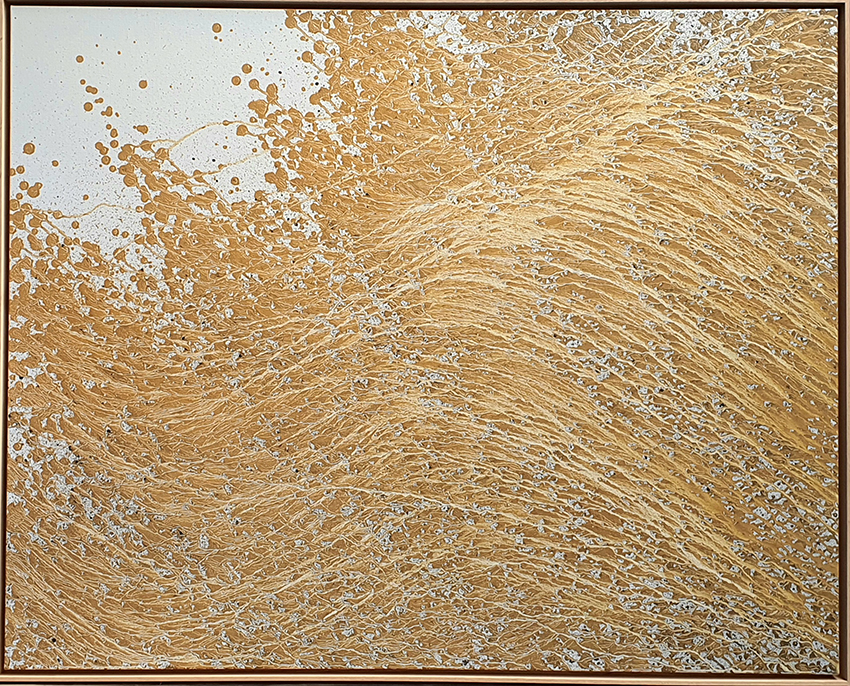 대지의 몽상(rêve de terre 211014) 130x162cm, terre et encre de Chine sur toile 2021
대지의 몽상(rêve de terre 211014) 130x162cm, terre et encre de Chine sur toile 2021
 대지의 몽상(rêve de terre 211013) 162x130cm terre et encre de Chine sur toile 2021
대지의 몽상(rêve de terre 211013) 162x130cm terre et encre de Chine sur toile 2021
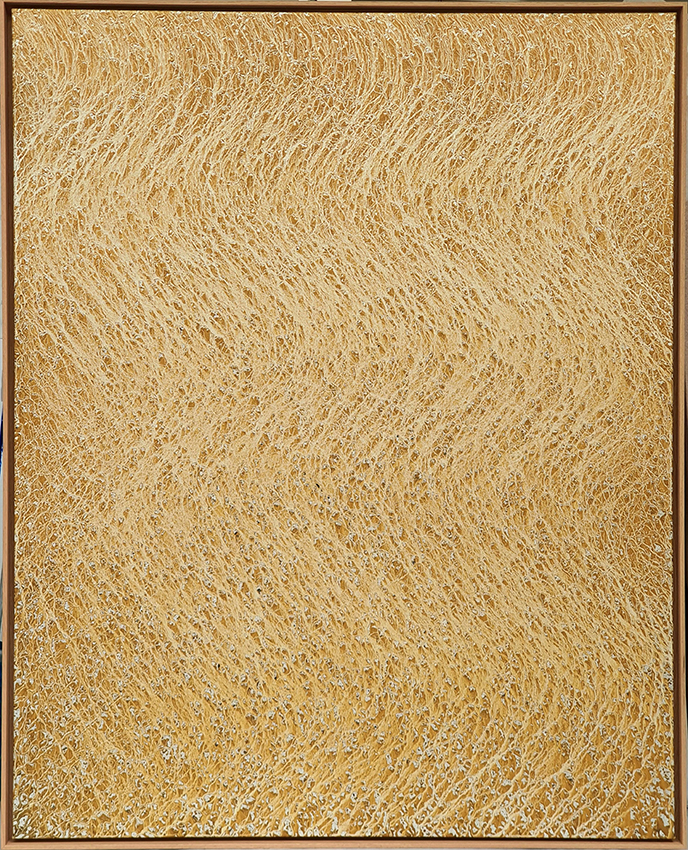 대지의 몽상(rêve de terre 211012) 162x130cm terre et encre de Chine sur toile 2021
대지의 몽상(rêve de terre 211012) 162x130cm terre et encre de Chine sur toile 2021
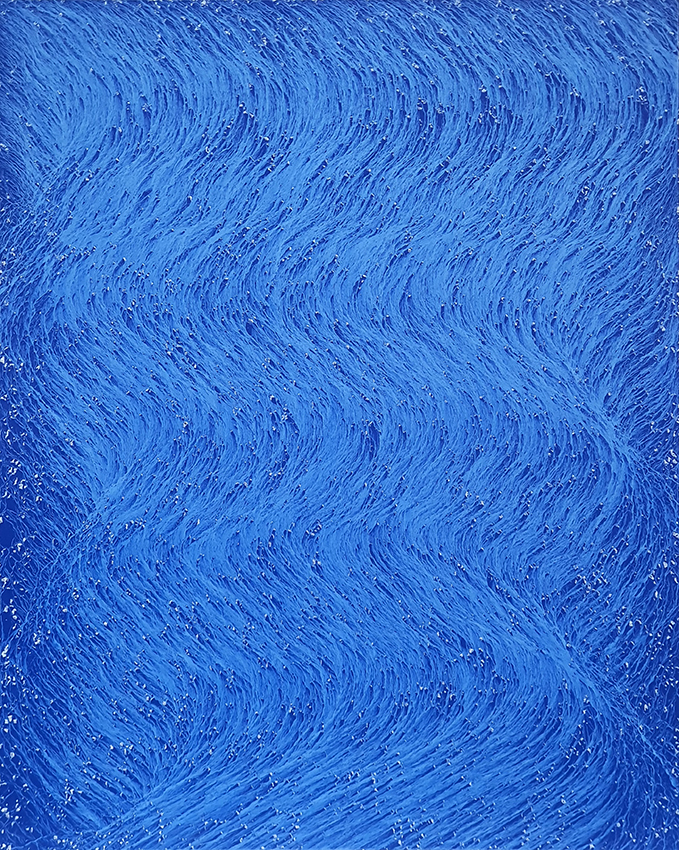 물의 초상(portrait d'eau 211011) 162x130cm pigments naturels sur toile 2021
물의 초상(portrait d'eau 211011) 162x130cm pigments naturels sur toile 2021
 익명의 땅(terre anonyme 211008) 130x162cm, terre et encre de Chine sur toile 2021
익명의 땅(terre anonyme 211008) 130x162cm, terre et encre de Chine sur toile 2021
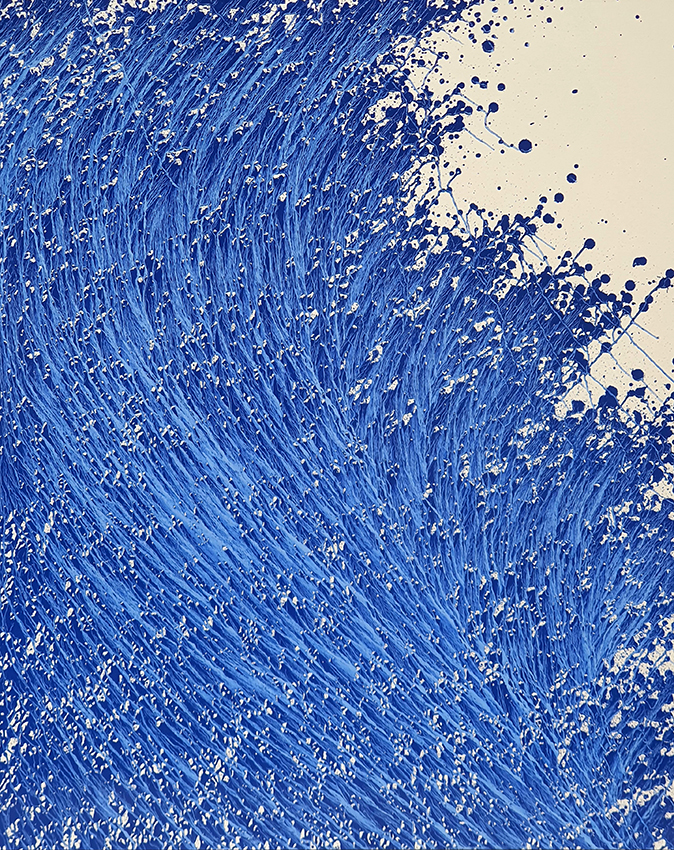 물의 초상(portrait d'eau 211007) 162x130cm pigments naturels sur toile 2021
물의 초상(portrait d'eau 211007) 162x130cm pigments naturels sur toile 2021
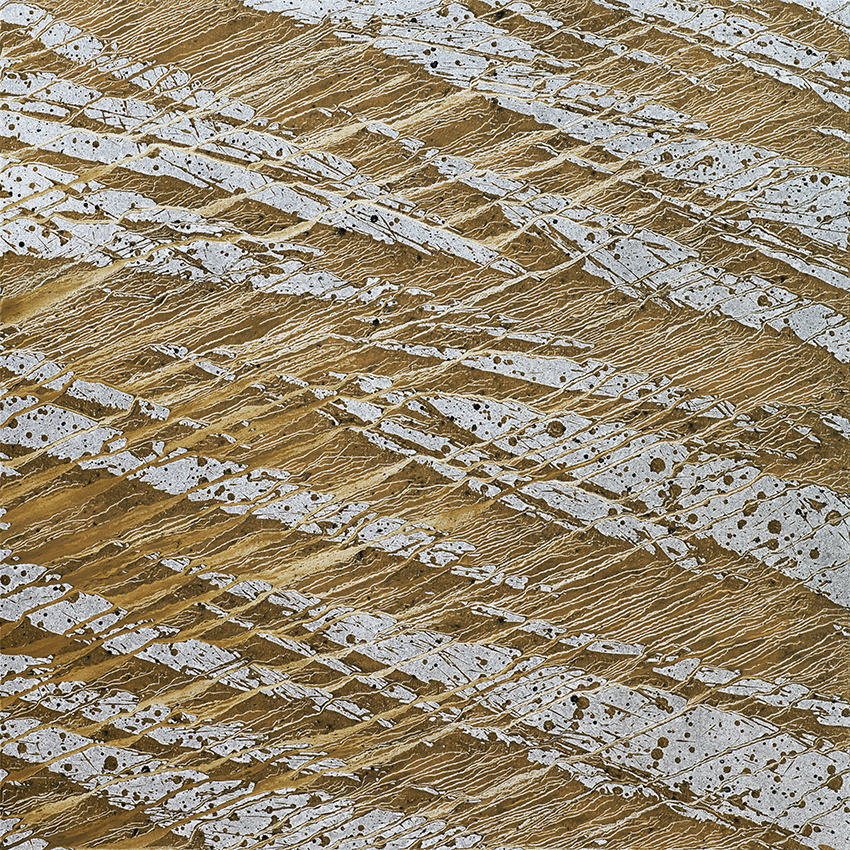 익명의 땅(terre anonyme 211005) 100x100, terre et encre de Chine sur toile 2021
익명의 땅(terre anonyme 211005) 100x100, terre et encre de Chine sur toile 2021
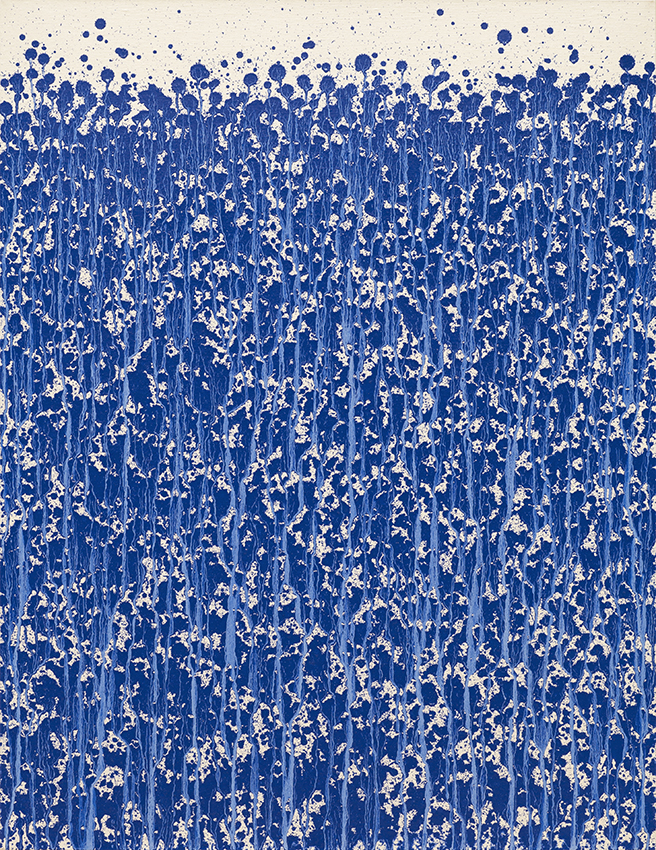 물의 초상(portrait d'eau 211003) 116x89cm pigment naturel sur toile 2021
물의 초상(portrait d'eau 211003) 116x89cm pigment naturel sur toile 2021
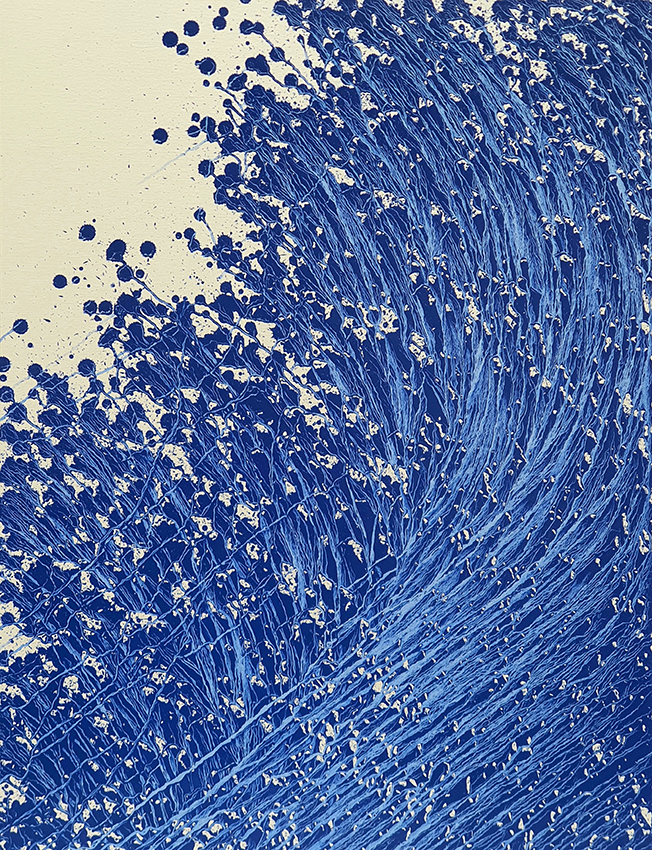 물의 초상(portrait d'eau 211001) 116x89cm pigment naturel sur toile 2021
물의 초상(portrait d'eau 211001) 116x89cm pigment naturel sur toile 2021
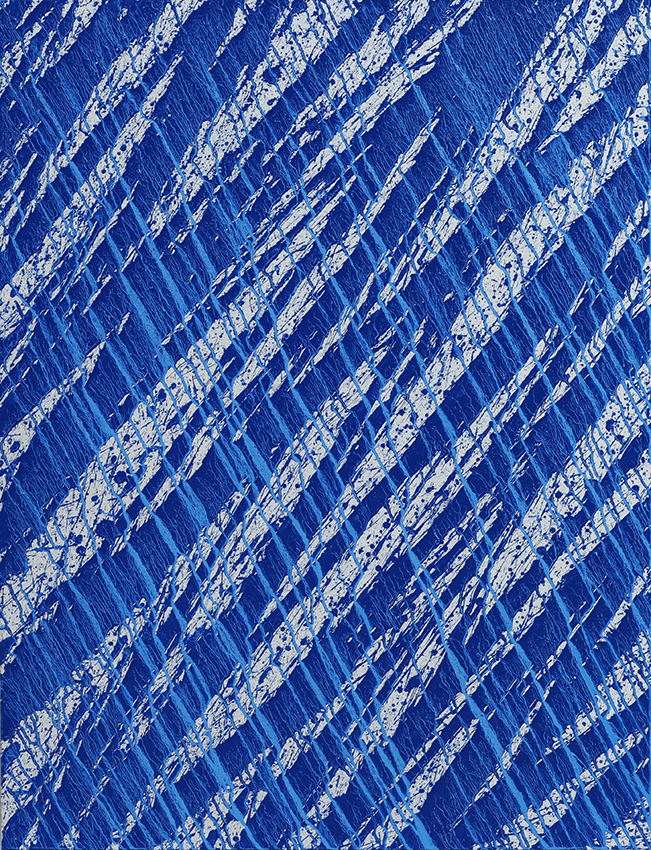 익명의 땅(terre anonyme 200415) 116x89cm, pigments naturels sur toile 2020
익명의 땅(terre anonyme 200415) 116x89cm, pigments naturels sur toile 2020
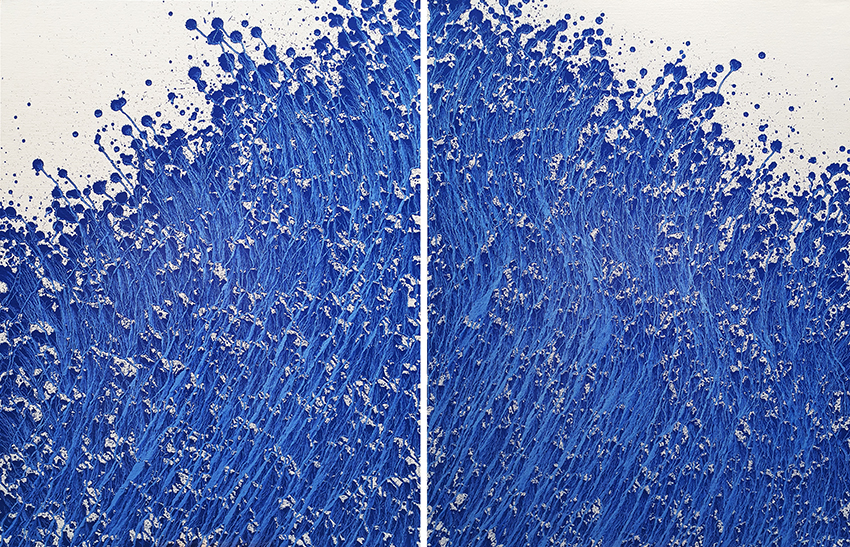 Histoire de bleuⅠ&Ⅱ 116x89cm natural pigments on canvas 2020
Histoire de bleuⅠ&Ⅱ 116x89cm natural pigments on canvas 2020
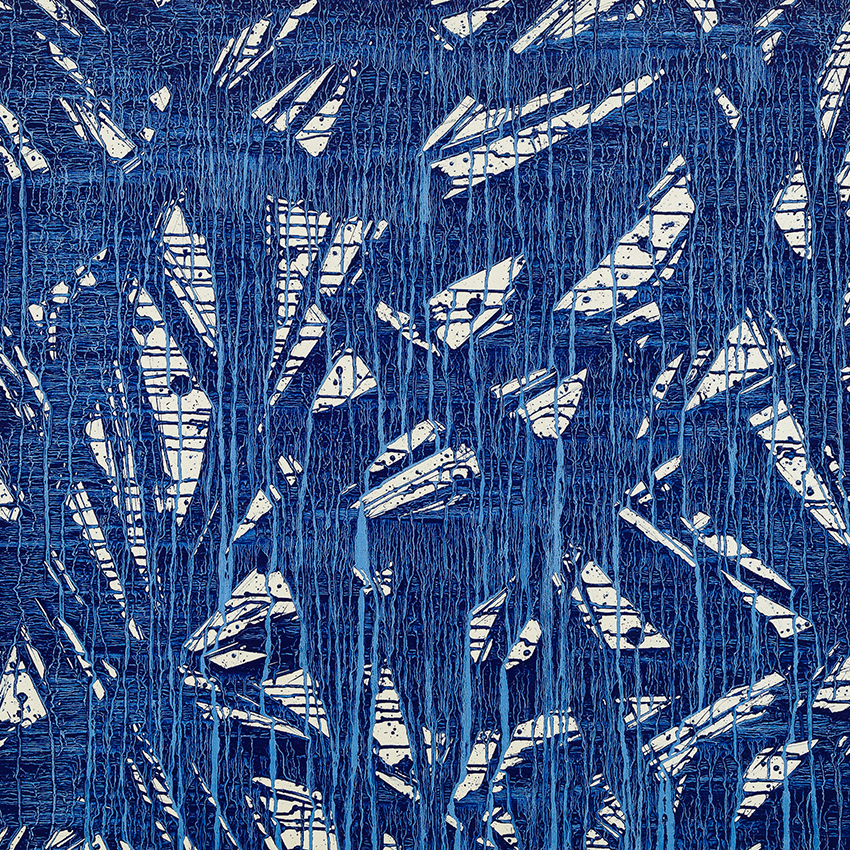 Terre Anonyme (histoire de bleu 180302) 100x100cm natural pigments on canvas 2018
Terre Anonyme (histoire de bleu 180302) 100x100cm natural pigments on canvas 2018
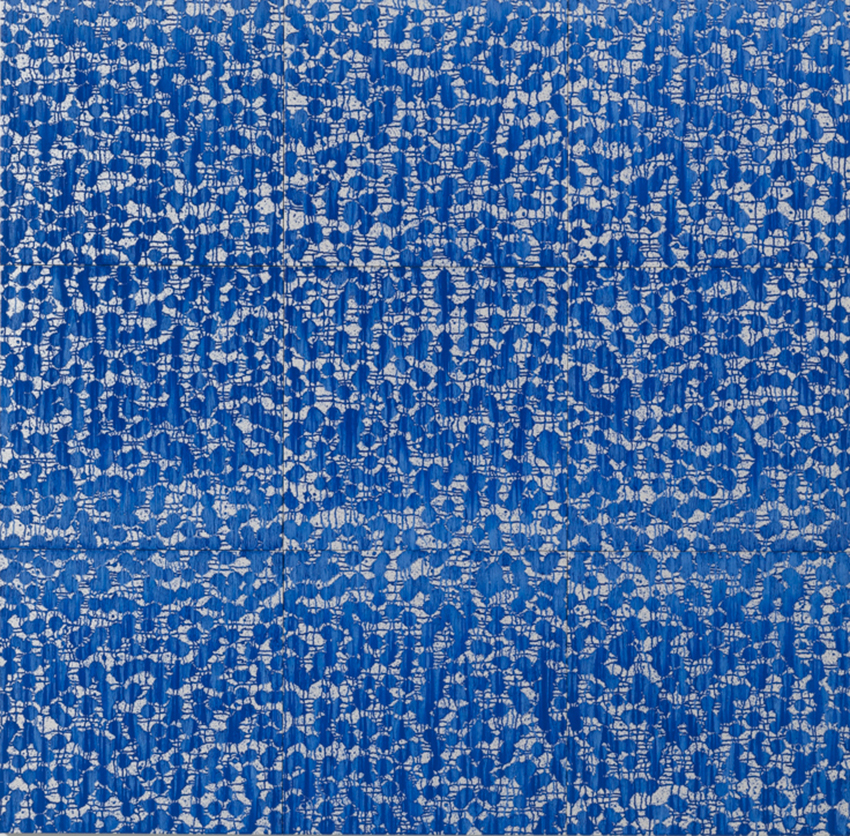 histoire bleu60x60cmx9pieces pigments naturels sur toile 2018
histoire bleu60x60cmx9pieces pigments naturels sur toile 2018
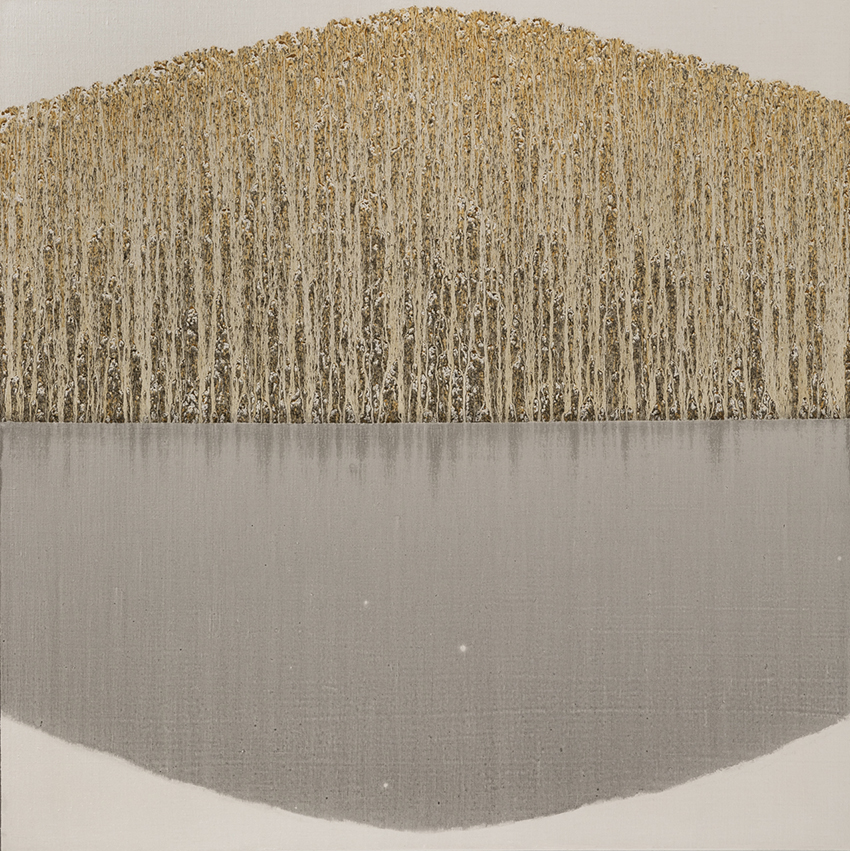 Origine(181118)100x100cm terre, pigments naturels, encre de Chine sur toile 2018
Origine(181118)100x100cm terre, pigments naturels, encre de Chine sur toile 2018
 Origine(181111)100x100cm terre, pigments naturels, encre de Chine sur toile 2018
Origine(181111)100x100cm terre, pigments naturels, encre de Chine sur toile 2018
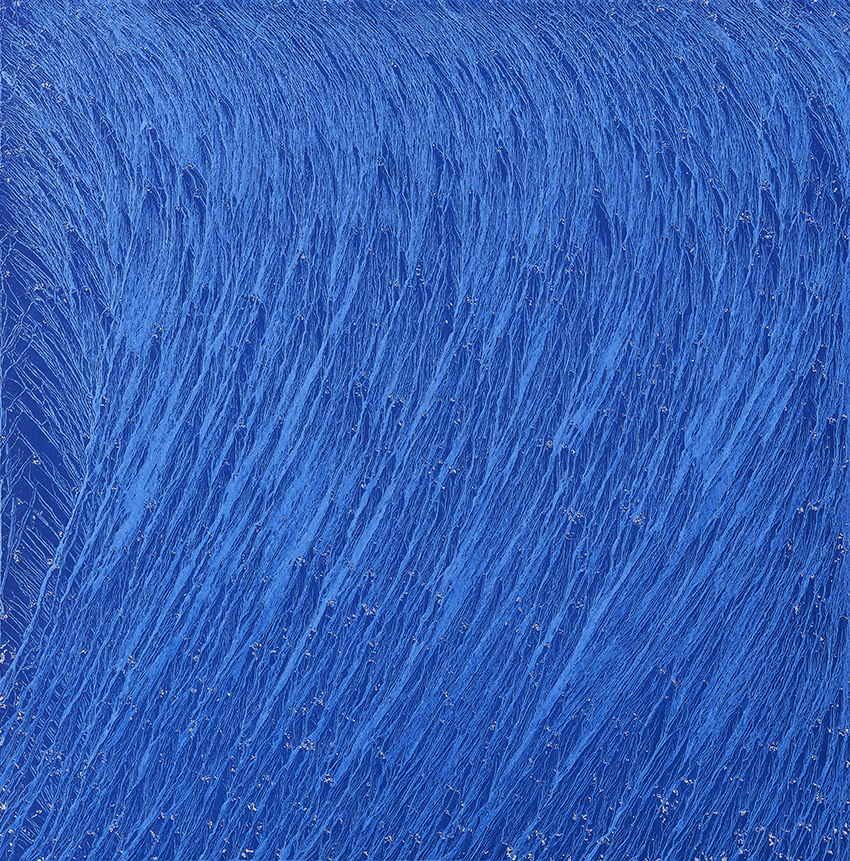 histoire de bleu(181122)100x100cm. pigments naturels sur toile 2018
histoire de bleu(181122)100x100cm. pigments naturels sur toile 2018
 Origine(181111) 162x130cm. terre, pigments naturels, encre de Chine sur toile 2018
Origine(181111) 162x130cm. terre, pigments naturels, encre de Chine sur toile 2018
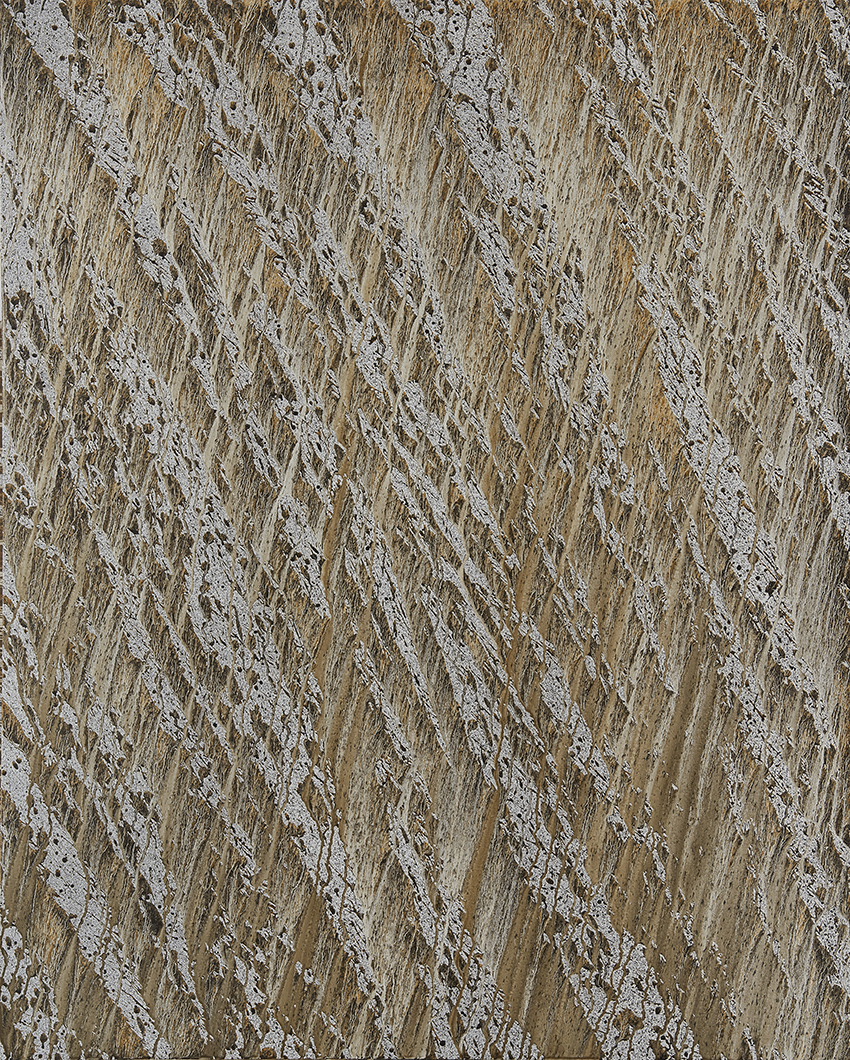 terre anonyme (180908)162x130cm. terre, encre de Chine sur toile 2018
terre anonyme (180908)162x130cm. terre, encre de Chine sur toile 2018
 Origine(180610)130x130cm terre, pigments naturels, encre de Chine sur toile 2018
Origine(180610)130x130cm terre, pigments naturels, encre de Chine sur toile 2018
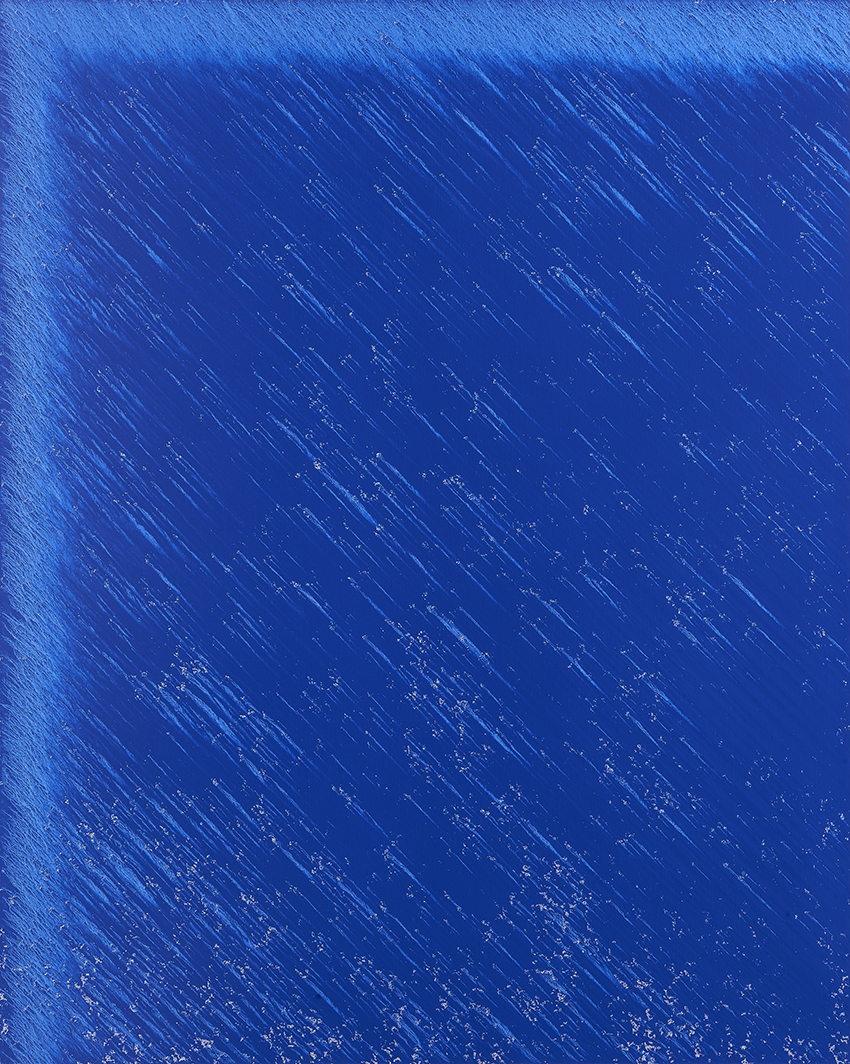 symphonie de terre(180707) 160x200cmx4p. pigments naturels sur toile 2018
symphonie de terre(180707) 160x200cmx4p. pigments naturels sur toile 2018
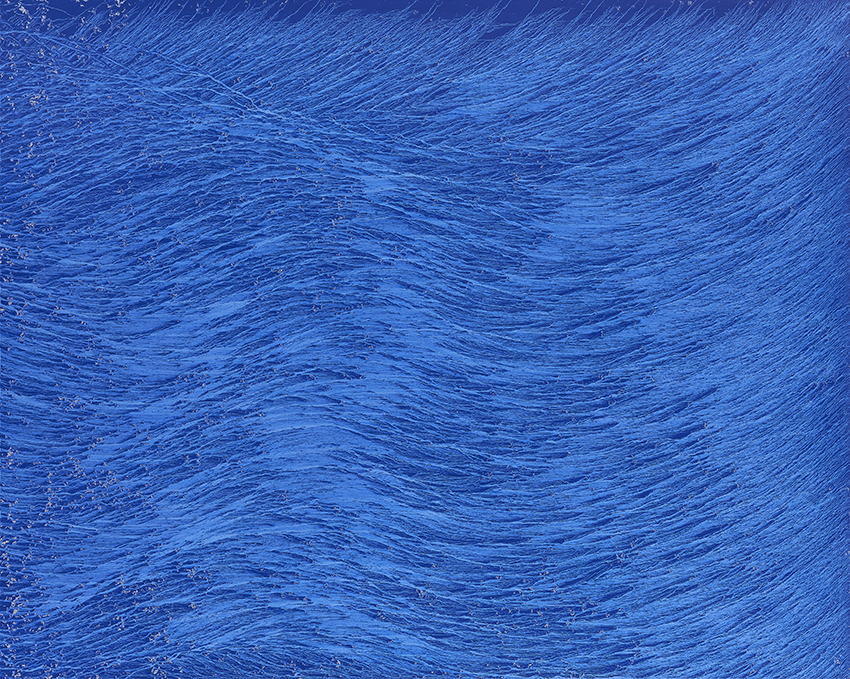 histoire de bleu(180808)160x200cm pigments naturels sur toile 2018
histoire de bleu(180808)160x200cm pigments naturels sur toile 2018
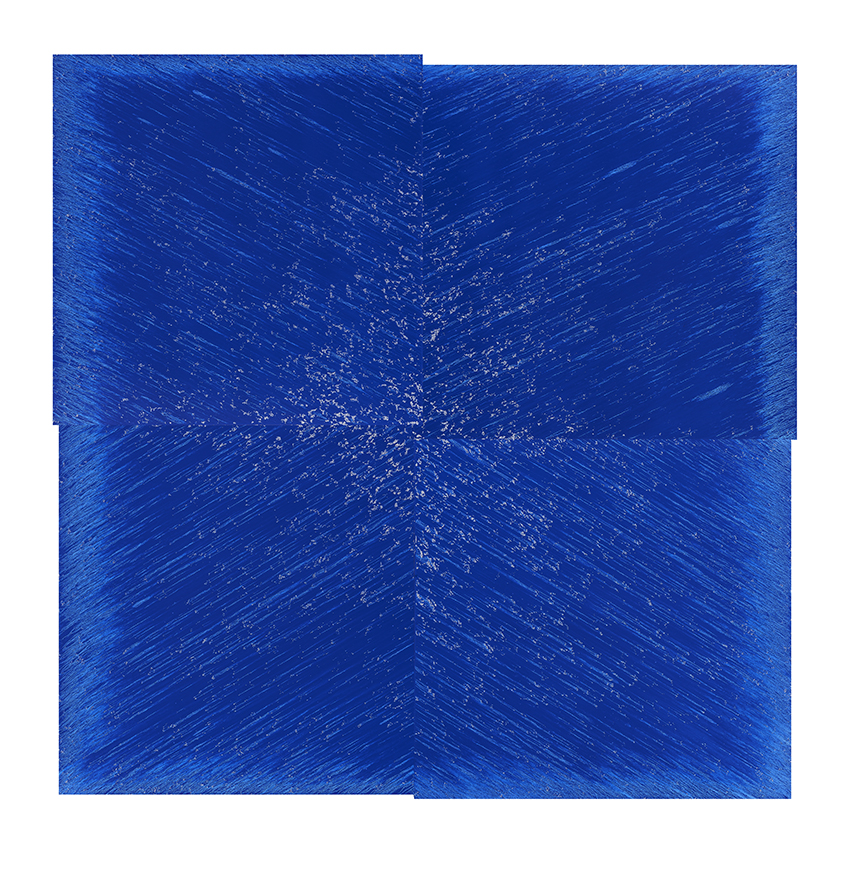 symphonie de terre(180707)160x200cmx4p. pigments naturels sur toile 2018
symphonie de terre(180707)160x200cmx4p. pigments naturels sur toile 2018
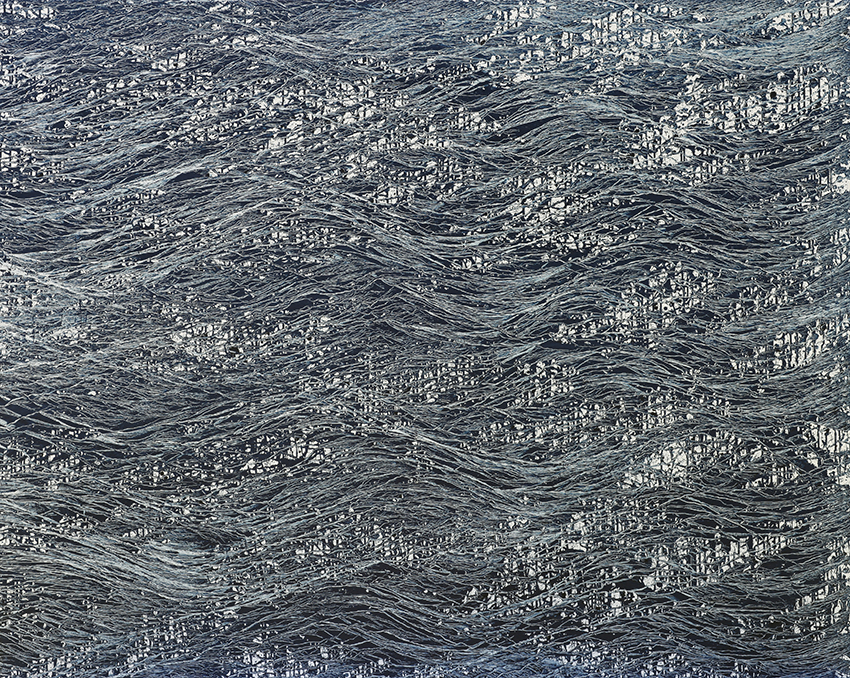 Land of reverie (대지의 몽상 130601)160x200cm soil and natural pigment on canvas 2013
Land of reverie (대지의 몽상 130601)160x200cm soil and natural pigment on canvas 2013
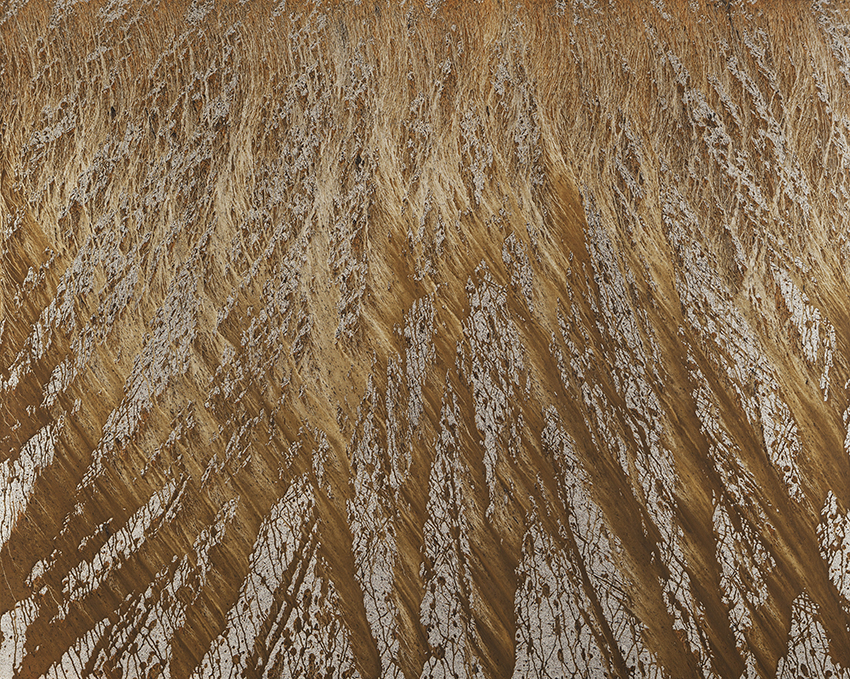 Land of reverie (대지의 몽상 120911)227.3x181.8cm soil and natural pigment on canvas 2012
Land of reverie (대지의 몽상 120911)227.3x181.8cm soil and natural pigment on canvas 2012
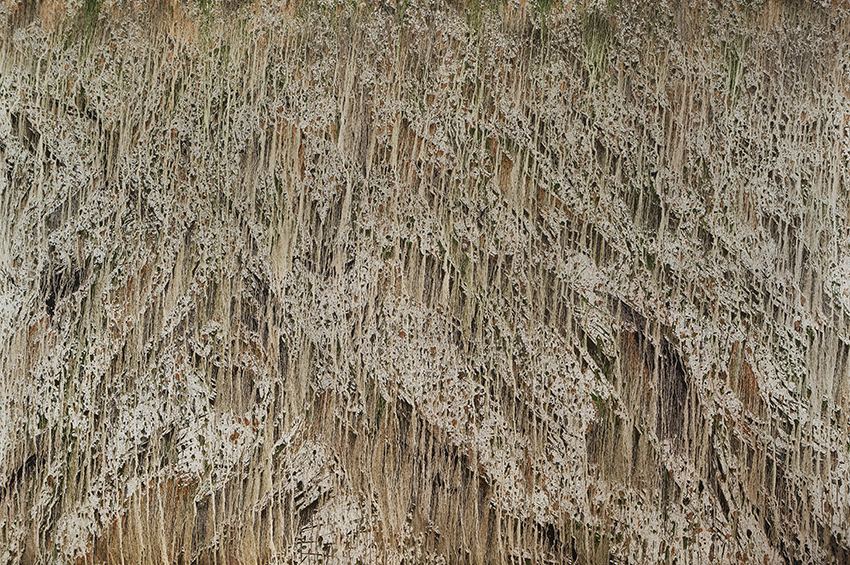 Land of reverie (120830)300x200cm soil and natural pigment on canvas 2012
Land of reverie (120830)300x200cm soil and natural pigment on canvas 2012
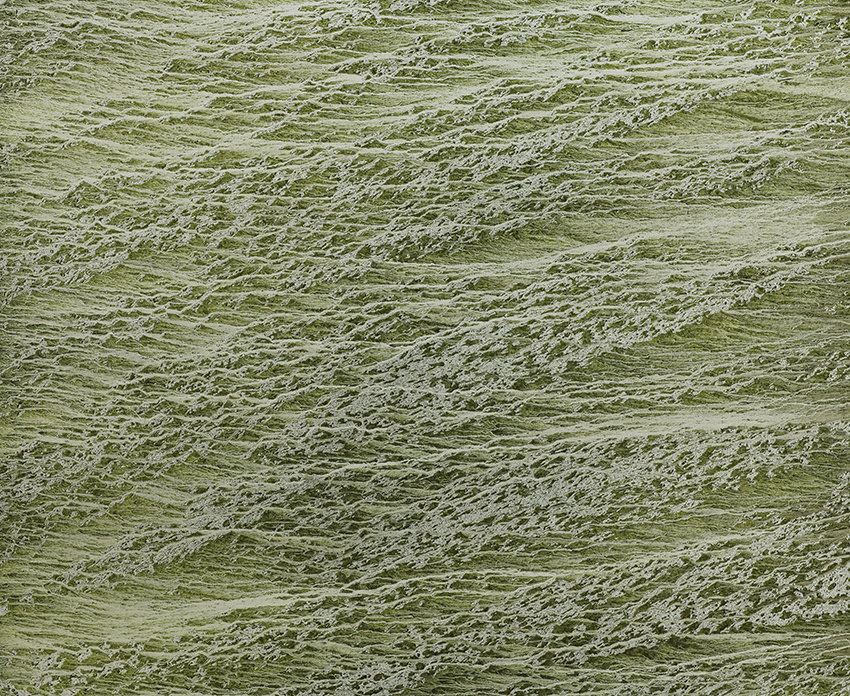 Anonymous earth (익명의 땅 1110716)138x170cm terre, pigments et encre de Chine sur toile 2011
Anonymous earth (익명의 땅 1110716)138x170cm terre, pigments et encre de Chine sur toile 2011
Meditating land of earth to land of fire
Kim, Sung-Ho (Art Critic)
Artist Sung-Pil, Chae uses the four elements—fire, water, earth, and air—which is considered as the essence of things in the West, and the five elements—water, fire, wood, metal, and earth—of the Yin-Yang and Five Element Theories from Eastern philosophy as the basis of the world of his works. By doing so, he intends to reveal the fundamental meaning of nature in his works. "Let it do itself, creation as a process itself (poïétique), I mean I’d like to show nature as it is," says he.
This article introducing an exhibition of paintings by artist Sung-Pil, Chae with a subtitle 'Land of Anonymity' rearranges the above five elements in the following order like fire, water, wood, metal, and earth in order to analyze the world of his works, and organizes the text as follows: 1. Fire – Now, and Here, 2. Earth – Source of Consilience, Middle-world, 3. Water – Play Adapting to Gravity & Mediation in the Invisible World, 4. Wood and Metal – Symbolic History, 5. Land of Anonymity – Aesthetic of Alchemy
1. Fire – Now, and Here
The land of fire exists here. Fire creates civilization and culture which are the most major sources allowing humans to be differentiated from other animals and to become a center of the world. Fire is a root of the human world as well as a driving force shaping the present existence of the Now, and here, the advanced material civilization. It is because fire coupled with metal made today's human world sophisticated. It works positively and sometimes negatively. That's right! We shouldn't have discovered fire. They say all evil comes from fire. The real world of Now, and here has gone through the era enjoying modern conveniences which began with fire that mankind discovered, and has also suffered from disasters caused by them. Oh, come on! Even so, how could we give up fire, the source of the world? The disasters caused by fire are due to human greed, so how could we blame fire? Fire is what has built today's culture as well as the world of art.
Let's think about it! Fire was in the realm of God in the first place. Yahweh, the manifestation of fire, in Hebrew mythology, YHWH who led the Israelites in the wilderness to pillar of fire and cloud, Prometheus who stole a spark from Zeus's own lighting bolt and gave it to humanity in Greek mythology, and Suirenshi, one of Three August Ones in Chinese mythology, who introduced people to the practice of drilling wood for fire, they all had warm hearts. But the people who were passed fire were increasingly becoming wicked. No, it's not. Just as God's world did, human world also exists with both good and evil. The world of fire is indeed the context of your life and mine as well as the horizon of complex and intricate reality, Now, and here.
2. Earth – Source of Consilience, Middle-world
Artist Sung-pil, Chae cogitates earth in the land of fire of Now, and here. For him who paints a picture of earth, earth is recognized as the most fundamental element of the five elements. That is to say, earth is perceived as a being that contains all of fire, water, wood, and metal.
The role of this earth is prominent in the world of his works. Earth is a material with which he played in his childhood, a place of his hometown, and a source making him confront and understand the world with the eyes of art creation until now. In addition, earth is a source of nature that human has left, and a place of origin summoned to Now, and here. Meanwhile, earth is a half-way station for mankind who is destined to return to a body. In other words, earth is not only a real world, This shore of Now, and here, where a human being stands on their feet, but also a symbolic world, The opposite shore of Later, and there. To be more exact, as death is a world recognized through indirect experience for anyone, the world of earth which includes This shore is more like a middle-world as a half-way station connecting This shore and The opposite shore, or a middle-world linking this world and the next.
His works actually show the fundamental position of earth, integration and consilience, which combines such many elements into one. First, he spreads thin layer of pearl pigments four to five times on paper or canvas that he laid down for his earth painting. It is a natural pigment with pearl-like gloss which the artist gathered himself. It is a shining silver material that visualizes the world of metal. As is known, pigments refer to powdery coloring which can be spread by mixing with vehicle such as gum arabic and synthetic resin liquid, or glue. It can become oil paint by blending oily vehicle, and watercolor paint such as acrylic paint by blending aqueous vehicle. The natural pigment is from nature with the main ingredient of mineral (metal). Concretely, it is from earth.
He first spreads the natural pearl pigments (fire, water, metal, earth) acquired from earth on the paper or the canvas (wood) as a base of his painting. Then, he paints on the canvas with a mixture of ocher (water, earth) filtered several times with fine filtering net and natural pigments (fire, water, metal, earth) as if he sprinkles it. He paints with a brush (wood) made of sorghum and glue dipped in muddy water or muddy water mixed with pigments by using a splatter painting technique which is similar to drip painting, a form of abstract art. He paints with the muddy water on the canvas by this action painting. He does not forget to spray additional Chinese ink (metal) on it. In this way, the world of earth is centered on artist Chae’s painting of earth for consilience (fire, water, wood, metal, earth) embracing water and pigments on the canvas.
3. Water – Play Adapting to Gravity & Mediation in the Invisible World
Artist Sung-pil, Chae implements the following major creative process at a way station to complete his work, soil-water painting. He spreads soil containing water and pigments on the canvas, waits for it to dry, spreads the watery paint again, and sprays Chinese ink (metal, water). Thereafter, he sprays high-pressure water (water) on some parts of the surface of the canvas before the canvas covered with the paint gets completely dried. He completes his painting through the process of washing some of the paint off on the canvas or letting the soil-water paint mixed with pigments flow down by standing the canvas. The paint washed off by pressure water flows down slowly on the canvas mixing some ink and soil spread in the previous step. What a fall of soil water and paint flowing down in gravity! The water enjoys a free travel for a while breaking through earth on the background and allowing itself to the law of gravity. It embraces even chance effects created between two substances.
A coincidental event just led him to start using gravity for his paintings. In the early days of studying abroad in France, he accidentally spilled food which his wife was preparing for on the floor, while painting on a canvas laid down in his narrow kitchen. He instinctively made the canvas stand to prevent the food from ruining his work, and cleaned the mess on the kitchen floor. At that instant he witnessed that undried paint was streaming down on the canvas due to gravity. Eureka! That’s a painting drawn by itself without any intervention of a painter! It was a new discovery to him. It was an inevitable event caused by gravity of the land, while it was an accident moment of an artist when he was being absent.
The accidental event marks a great turning point in his creative activity by making him come up with a new creative language that put a chance into inevitability in a way to adapt gravity. He throws his works into gravity, the world of inevitability, to pick up accidential effects between predictable and unpredictable. It is because he just doesn't let the flowing-down paint under gravity move by themselves from the beginning to the end. He watches the flow of water and paint falling down through earth and keeps intermittent intervention to control the flow by tilting the canvas or changing the direction of the canvas. However, he occasionally intervenes in gravity just changing inertia direction of the flowing material for a moment, and basically keeps observing it in a manner to adapt gravity. In this regard, making a coincidence in the inevitable and intervening into coincidences created by gravity become a kind of play and game adapting to gravity.
We all know that gravity combined with universal gravitation and centrifugal force caused by the Earth's rotation is existent force affecting the world we live in at all times, but it is almost same as an invisible thing since it is too ordinary. It is like air, wind or wave of frequency occupying the space. Invisible presence! Therefore, the expression to see gravity is similar to the expression to recognize gravity. It is not only gravity that is considered as rather a invisible thing despite its presence since it is too ordinary in everyday life. Not only air or wave of frequency mentioned above but also the concept of time and history are invisible things although we are always with them.
There are many invisible things we can't see with eyes in his works. They include gravity we have seen before, as well as the concepts of action, flow, time, history, etc. In his works, these concepts work inside of or beside the visible things. Specifically, these concepts include both a vestige of destruction cleared by water and a vestige of absence that the destruction resulted in, which work together in his works. It is to be noted that a vestige of destruction here doesn't lead to extinction but rather leads to another creation by the flow of soil water. It is something that is perceived as an image of mountains, fields, or sea depending on who sees it.
Meanwhile, a vestige of absence doesn't exist in a vestige of destruction (not destruction, but a vestige of another creation) but beside it. One example is a silver background covered with pearl pigments. This is a vacant space, but it can be recognized as rock face in one case, or a large rock in a field in other case. In this way, his work exploring creation from destruction and vestiges of what is left beside the creation may seek for reflection on invisible things in or beside visible things. I call it meditation in the invisible world.
So, the aesthetic of water for him is to conduct painting in a reverse way through the creative process of clearing, and to practice creation in a way of extinction. You may well say that it is mediation in the invisible world along with the attitude of play and game.
4. Wood and Metal – Symbolic History
Sung-pil, Chae's soil-water painting has wood and metal. They are classified into a world of nature (wood) and an artificial world (metal). As we learned in the previous section, it is same level as the division into the real world of Now, and here and a source of pigments and an origin of the human world. The water path (water) running between them is a hidden symbol of history.
Look! In his painting, a picture of landscape but non-landscape, water runs through rocks (metal) making a water path where green grass (wood) grows around. Water sometimes runs through the ground which seems like some of ocher-rich mineral and flows making a brown dirt path, or a brown waterfall spills out and rain is pouring on the ground. It may look like a warm sunshine pouring from the blue sky, or a landscape of blue sea with dancing waves for other people. Another painting seems like people on a dark blue carpet are holding hands together and dancing in group. Like this, Sung-pil Chae's works contain images of mountains full of stones, growing grass and rocks on a desolate plain, sea of abyss, or people. However, it may look different like a landscape sometimes and amorphous abstract shape other times depending on who observes. Particularly, a series of Blue released recently is full of images that look like amorphous abstract shape. An image that looks like patterned designs of vertical and horizontal, or lines and curves presents undefined abstraction. His collections of a series of Blue are usually entitled 'The History of Blue'. It means history symbolized by blue rather than history regarding the color. Blue symbolizes the history of progress and shackles, as it contains both hope and melancholy. See his statement in the author's notes.
"Blue is a bruise, hope, sea surrounding the earth, and the sky that has witnessed history"
Right. His painting studded with blue dots was created considering candlelight vigil in Korea which demanded the Sewol Special Act and called for the impeachment of the leader who was running the country with a twisted personal desire. The image that looks like rolling waves of sea is another work that he painted in the days when he witnessed the history of the Sewol ferry disaster through the media in France.
The name of history presented by his painting with the very abstract images is a symbol in that sense. Although the artist created it paying attention to a specific history, it becomes a pictorial statement of the artist about the universal history. A dictionary definition of history, "a process of human society’s transition, and rise and fall, or a record of the process", delivers a message that history is a record and an interpretation of past events. Given history is generally a task to illuminate the historic age recorded by documents since the invention of alphabet, the history that this artist approaches using images may include both the historic and the prehistoric age. Think about it. It is said that "the prehistoric period accounts for 95% of human history". Archaeologists deal with this period. Thus, the history that Chae describes by using images symbolizes the history in the universal sense itself beyond the research methodology distinguishing the prehistoric times and the historic times. It can be called the history encompassing all ages from a historical-philosophical point of view such as origin history, prehistory, and recorded history, that is to say the symbolic history or a symbol embracing all unique history in the universality that includes the speciality.
5. Land of Anonymity – Aesthetic of Alchemy
Artist Chae visualizes the journey to earth at the age of fire of Now, and here. The manifestation of earth refers to the land. It is not a land that the empire divided, conquered and owned, but a land of "onsaemiro" which has been free from the beginning of the world. "Onsaemiro" is a pure Korean word that means "undivided, unbroken, intact, natural, and invariable". It is not a land with boundaries that conquerors made by building walls between subjects and others with names of an enemy and a foreign country, but a seamless land with no boundary for a continuous nomadic life. It is not a land which is named and owned, but a land of Mother Nature, home of all human beings. Chae calls this land Land of Anonymity, and describes the history of earth in his works as Land of Anonymity. His Land of Anonymity is not a land with boundaries to distinguish, but one integrated land for everyone. It is integrated one embracing all the five elements: fire, water, wood, metal, and earth. Therefore, it enables many things to converge each other. You may well say that it is a land embracing the aesthetic of alchemy.
Alchemy was an experiment trying to seek for dialectical union of opposites in order to discover soul of gold until the 18th century in the West. To be more precise, it would be a dialectical experiment aiming for Philosopher's Stone, a substance that they had tried hard to find but finally failed to find. It is also an imaginary substance that had been searched for in the East under the other names of panacea or elixir of life but failed to find.
Sung-pil Chae keeps trying the dialectical unions of the heterogeneous objects in order to discover Philosopher's Stone in his paintings. They shows countless symmetries and contacts. They have contrasting properties such as in/out, vertical/horizontal, straight/curved, shape/non-shape, conception/abstraction, and typical/atypical. They also have contrasting actions like fast/slow, fill/empty, paint/erase, remove/leave, reveal/hide. That’s not all. In his paintings, action painting from the West and law-abiding from the East encounter, and human and nature meet. Also, adaptation and resistance to gravity meet together, and play and game under gravity meets with meditation in the invisible world. All these things meet and cross each other.
As the accomplishments of alchemy in various fields such as chemistry, physics, and pharmacology in the process of discovering Philosopher's Stone have served as foundation of modern civilization, artist Chae keeps experimenting with his works full of aesthetic of alchemy for further exploration. For alchemists, changing a base metal to gold was only a secondary goal that was set during the process of finding Philosopher's Stone. For artist Chae, he doesn’t aim to something like finding the most ideal formative language through the dialectical unions of foreign things. More important thing to him is creation as a process itself (poïétique). In other words, it is meaningful for him to explore the main idea that he wants to express through the continuous experiments with the dialectical unions of contrasting concepts, or the main idea of Land of Anonymity to come from earth and return to earth with a new mindset getting out of a rut at all time. In doing so, he expresses materialistic imagination (imagination matérielle) mentioned by Gaston Bachelard or poetic imagination mentioned by him that realizes dream of the land. This constant formative experiment and his efforts will provide a more progressive achievement in art for him and provide audience with more extensive experience to enjoy art. He is still pondering over the land of earth in the land of fire.
불의 땅에서 흙의 땅을 사유하다.
김성호(미술평론가, Kim, Sung-Ho)
화가 채성필은 서구에서 만물의 본질로 간주하는 4대 원소인 ‘불, 물, 흙, 공기’와 동양 철학의 음양오행(陰陽五行)에서 오행인, ‘물(水), 불(火), 나무(木), 쇠(金), 토(土)’를 자신의 작품 세계의 바탕으로 삼는다. 그렇게 함으로써 그는 자연의 근원적 의미를 자신의 작품 속에 드러내고자 한다. 그는 말한다. “스스로 그러하게 하는 것, 과정으로서의 창작(poïétique), 즉, 원래 그러했던 것처럼, 있는 그대로의 자연을 보여드리고 싶습니다.”
‘익명의 땅’이라는 부제를 달고 있는 화가 채성필의 개인전을 소개하는 이 글은 그의 작품 세계를 분석하기 위해서 상기의 오행을 ‘화수목금토’의 순으로 재배열하고 다음처럼 구성하여 순차적으로 살펴본다: 1. 불(火) - 지금, 여기, 2. 흙(土) - 통섭의 근원, 중간 세계, 3. 물(水) - 중력에 순응하는 놀이 & 보이지 않는 세계에서의 명상, 4. 나무(木)와 쇠(金) - 상징 역사, 5. 익명의 땅(土) - 연금술의 미학.
1. 불(火) - 지금, 여기
‘불의 땅’이 여기에 있다. 불이 야기한 문명과 문화는, 인간을 다른 동물들과 차별화되고 세계의 중심이 되게 만든 가장 주요한 근원이다. 불은 인간 세계의 출발이자, 첨단의 물질문명에 이른 ‘지금-여기’의 현존재에 이르게 한 원동력이다. 불이 금(金)을 만나 오늘날의 인간 세계를 정교하게 만들었기 때문이다. 긍정적으로 때로는 부정적으로 말이다. 그래! 불을 찾지 말 걸 그랬다. 불로부터 모든 악이 진행되었다고 하니 말이다. ‘지금, 여기’의 현실계는 인류가 발견했던 불로 시작된 문명의 이기들이 창궐하는 시대를 지나는 한편, 그것으로 인한 패악들로 허덕인다. 아서라! 그렇다고 세상의 근원인 불을 어찌 버리겠는가? 불로 말미암은 패악이라는 것이 인간의 과욕 때문인 것을 어찌 불을 탓할 것인가? 불로 오늘에 이르는 문화뿐 아니라 예술의 세계를 구축했으니 말이다.
생각해 보자! 불은 애초에 신의 영역이었다. 불로 현현한 헤브라이즘 신화 속 야훼, 불기둥과 구름기둥으로 광야 속 이스라엘 백성들을 인도하던 야훼, 천상에 간직한 제우스의 번개로부터 탈취한 불씨를 인간에게 전한 그리스 신화 속 프로메테우스(Prometheus), 접목취화(接木取火)로 불을 인간에게 전한 중국 고대 신화의 삼황(三皇)이었던 수인씨(燧人氏), 그들의 마음은 따뜻했다. 다만 불을 건네받은 인간의 마음이 점차 사악해졌을 뿐이다. 아니다. 신의 세계도 그러했듯이, 인간의 세계도 선과 악이 함께 했을 따름이다. 그야말로 ‘너와 나의 삶’의 맥락(context)이자 ‘지금, 여기’라는 복잡다기한 현실의 지평(Horizont)인 것이다.
2. 흙(土) - 통섭의 근원, 중간 세계
화가 채성필은 ‘지금, 여기’의 ‘불의 땅’에서 ‘흙’을 사유한다. ‘흙 그림’을 그리는 그에게 흙은 오행(五行) 중에서 가장 근원적인 요소로 인식된다. 즉 흙을 ‘불, 물, 목, 금’을 모두 품는 존재로 수렴하는 것이다.
그의 작품 세계에서 이러한 흙의 역할은 두드러지게 드러난다. 흙은 그에게 개인적으로 어린 시절 함께 하던 놀이의 재료이자, 고향으로서의 장(場)이며, 현재까지 그가 미술 창작의 눈으로 세계를 대면하고 이해하게 만드는 근원이다. 아울러 흙은 인간이 떠나온 자연으로서의 원시향(源始鄕)이자, ‘지금 여기’에 소환되는 근원의 세계이다. 한편, 흙은 인간이 ‘주검’의 상태로 다시 회귀(回歸)하는 운명을 예정한 인간의 중간 기착지(寄着地)이다. 즉 ‘흙’이란 인간이 발을 디디고 서 있는 ‘지금, 이곳’의 차안(此岸)이라는 리얼리티의 세계이자, ‘나중, 그곳’을 상정하는 피안(彼岸)이라는 상징의 세계이기도 하다. 엄밀히 말해, 죽음이란 누구에게나 ‘간접 경험’으로 인식되는 세계라는 점에서, 이 ‘흙’의 세계는 차안을 포함하되 차안과 피안을 잇는 기착지로서의 ‘중간계’, 혹은 ‘세계 이전’과 ‘세계 이후’를 연결하는 ‘중간계’라는 말이 더욱 부합하겠다.
그의 실제 작품 안에는 이처럼 많은 요소들을 하나로 함유하는 통합과 통섭이라는 흙의 근원적 위상이 잘 드러나고 있다. 먼저 그는 자신의 흙 그림을 위해서 눕혀 놓은 종이나 캔버스 위에 엷은 '펄 안료(pearl pigment)'을 4-5회 펴 바른다. 그것은 진주 모양의 광택을 내는 안료로, 작가가 직접 선별한 천연 안료이다. 그것은 반짝이는 은빛을 내면서 금(金)의 세계를 가시화하는 재료이다. 주지하듯이, 안료란 아라비아고무, 합성수지액 등의 전색제(展色劑), 또는 접착제에 섞어서 도포하는 분말상(粉末狀)의 착색제를 가리킨다. 여기에 유성의 용매를 섞으면 유화가 되고, 수성의 용매를 섞으면 아크릴 등의 수성화가 되는 것이다. 천연 안료는 광물(金)을 주원료로 한 자연으로부터 온 것이다. 구체적으로 그것은 ‘흙(土)’으로부터 온 것이다.
그는 일차적으로 눕혀 놓은 종이나 캔버스(木) 위에 흙(土)으로부터 온 천연의 ‘펄 안료(火, 水, 金, 土)’를 발라 자신만의 회화의 밑바탕을 삼는다. 이후 작가는 그 위에 고운 거름망으로 수차례 거른 황토(水, 土)를 천연 안료(火, 水, 金, 土)와 섞어 캔버스에 뿌리듯 도포한다. 수수나 풀로 엮어 만든 붓(木)에 흙물 혹은 ‘안료가 섞인 흙물’을 가득 적셔 추상표현주의의 드리핑 기법과 유사한 흩뿌리기 방식을 구사한다. 그는 이러한 액션 페인팅을 거치면서 캔버스의 표면을 흙물로 도포한다. 여기에 먹물(金)을 추가적으로 뿌리는 것도 잊지 않는다. 그의 회화의 근저에는 이러한 ‘캔버스 위에 물과 안료를 머금은 통섭의 흙의 회화(火, 水, 木, 金, 土)’에는 ‘흙(土)’의 세계’가 중심에 자리한다.
3. 물(水) - 중력에 순응하는 놀이 & 보이지 않는 세계에서의 명상
화가 채성필은 자신의 ‘흙물 회화’의 완성에 이르는 중간 기착지에서 다음과 같은 주요한 창작 과정을 작동시킨다: ‘캔버스 위에 물과 안료를 머금은 흙’을 바른 후, 그것이 건조한 이후 한 번의 묽은 물감을 다시 도포하고 먹물(金, 水)을 흩뿌린다. 이후 캔버스를 세워 놓고, 물감으로 덮인 캔버스의 표면이 완전히 건조되기 전에 일부의 표면 위에 강력한 수압의 물(水)을 분사시킨다. 물로 표면의 일부를 지우는 과정을 거치거나 캔버스를 세워 안료가 섞인 흙물을 흐르게 놔두면서 자신의 페인팅을 만들어 나간다. 물벼락을 맞은 물감은 이전 단계에 칠해진 먹과 흙을 일부 섞으면서 은빛 바탕 면을 타고 유유히 낙하한다. 중력(重力)을 타고 흐르는 흙물과 물감의 낙하! 그것은 물이 바탕면의 흙을 깨고 중력의 법칙에 자신의 몸을 의탁한 채 즐기는 잠시 동안의 자유 여행이다. 그것은 물질과 물질 사이에서 창출되는 우연의 효과마저 수용한다.
채성필이 자신의 회화 창작에 있어서 중력을 끌어들이게 된 계기는 순전히 우연적인 사건으로부터 비롯되었다. 프랑스 유학 초기 그가 좁은 부엌에 화폭을 눕혀 놓고 흙물로 회화 작업을 한창 하던 중 그의 아내가 준비하던 음식을 실수로 바닥에 쏟기에 이른다. 음식이 그림을 망칠까 우려해 그는 순발적으로 화폭을 일으켜 세워 놓고 난장판이 된 부엌 바닥을 정리하게 되었는데 그는 순간 마르지 않은 물감이 중력에 따라 화폭 위로 줄줄 흘러내린 장면을 목도하게 된다. 유레카(Eureka)! 작가의 통제 없이 ‘저절로 그려진 회화’! 그것은 그에게 새로운 발견이었다. 그것은 이 땅의 중력이 만들어낸 필연이었으나 작가에게 그것은 자신이 부재했던 우연의 순간이었다.
이 우발적인 사건은 화가 채성필에게 ‘중력에 순응하는 방식으로 필연 속에 우연을 던져두는 새로운 창작의 언어’를 구상하게 만들면서 그의 창작에 있어서의 대전환점을 마련한다. 채성필은 ‘중력’이라는 필연의 세계에 자신의 회화를 던져 ‘예측 가능’과 ‘예측 불가능’ 사이에서 우연적 효과를 건져 올린다. 그도 그럴 것이 중력에 따른 물감의 낙하를 처음부터 끝까지 물감과 중력에만 맡겨둔 채 방임하지만은 않기 때문이다. 그는 흙을 가르면서 낙하하는 물과 물감의 흐름을 지켜보다가 캔버스를 기울이거나 캔버스의 방향을 바꾸어 흐름을 조율하면서 간헐적인 개입을 지속한다. 하지만 그는 낙하하는 물질의 관성을 잠시 다른 방향으로 되돌리면서 중력에 가끔씩 개입할 뿐, 원칙적으로 중력에 순응하는 태도를 지속적으로 관철한다. 그런 면에서 그의 ‘필연 속 우연 만들기’와 ‘중력이 만드는 우연 안으로의 개입’은 중력에 순응하는 가운데서 벌이는 일종의 ‘놀이와 유희’가 된다.
우리 모두는 알고 있다. ‘만유인력과 지구의 자전에 따른 원심력이 합해진 중력’은 우리가 살고 있는 세계 내에서 언제나 작동하고 있는 실재이나 너무 일상적인 것이어서 ‘보이지 않는 것’이나 다를 바 없음을 말이다. 그것은 우리에게 마치 공기나 바람 또는 그곳을 점유하는 주파수의 파동과 같은 존재이다. 보이지 않는 실재! 따라서 ‘중력을 본다’는 표현은 ‘중력을 인식한다’는 표현과 닮은꼴이다. 실재하고 있으나 일상에 만연해서 차라리 ‘보이지 않는 것’이라 할 만한 것들은 ‘중력’뿐만이 아니다. 앞서 언급한 공기나 주파수의 파동은 물론이고 시간과 역사의 개념 역시 우리와 늘 함께 하고 있으나 쉬이 ‘보이지 않는 것들’이다.
채성필의 작품에서 우리 눈에 쉬이 ‘보이지 않는 것’들은 많다. 앞서 살펴본 ‘중력’은 물론이며, 행위, 흐름, 시간, 역사와 같은 개념들이 그것이다. 그의 작품에서 이러한 개념들은 ‘보이는 것들’의 안/옆에서 작동한다. 구체적으로 이러한 개념 안에는 그의 작업에서 ‘물’로 비우고 지운 ‘파괴의 흔적’과 그것으로 인해 남게 되는 ‘부재의 흔적’이 함께 연동된다. 유념할 것은 여기서 ‘파괴의 흔적’은 소멸을 이끌지 않고 오히려 ‘흙물의 흐름이 창출하는 또 다른 생성’을 이끌어 낸다는 것이다. 그것은 혹자에게는 산의 형상으로, 어떤 이에게는 들판의 형상으로, 또 누군가에게는 바다의 형상처럼 인식되는 무엇이다.
한편 ‘부재의 흔적’은 이 ‘파괴의 흔적(파괴가 아닌 또 다른 생성의 흔적)’ 안에 있지 않고, 그 옆에 존재한다. 은빛을 내고 있는 ‘펄 안료’의 질료로 꾸려진 바탕 면이 바로 그것이다. 이 또한 비워진 공간이지만, 혹자에게는 암벽의 모습으로, 누군가에게는 들판 속 커다란 바위의 형상으로 비춰지기도 한다. 이처럼 ‘파괴로부터의 생성’, 그 옆의 ‘남겨진 것의 흔적’을 탐구하는 그의 작업은 ‘보이는 것들의 안/옆’에서 ‘보이지 않는 것들에 대한 성찰’을 모색한다고 할 수 있겠다. 가히 ‘보이지 않는 세계에서의 명상’이라 할 만하다.
이처럼 그에게 있어 ‘물’의 미학이란 ‘지우기의 창작 과정’을 통해서 역으로 ‘회화하기’를 실천하는 것이자, 소멸의 방식으로 생성을 실천하는 것이 된다. 가히 놀이, 유희의 태도와 더불어 보이지 않는 세계에서의 명상이라 할 것이다.
4. 나무(木)와 쇠(金) - 상징 역사
채성필의 ‘흙물 그림’ 안에는 나무와 쇠가 있다. 그것은 자연(木)과 인공(金)의 세계로 대별된다. 마치 우리가 앞에서 ‘지금, 여기의 현실계(火)’와 ‘질료의 근원과 인간 세계의 시원(土)’으로 대별해서 살펴보았던 대립과 같은 차원이다. 이 사이를 흐르고 있는 물길(水)은 역사(歷史)에 대한 숨겨진 상징이다.
보라! 채성필의 그림 속 ‘풍경이자 풍경 아닌 그림’에는 바위(金)를 가르고 물길을 만들어 지나는 곳곳에서 푸르른 풀(木)이 자라난다. 때로는 황토색 가득한 광물질의 무엇처럼 보이는 땅을 가르고 누런 흙길을 만들어 나가거나, 누런 폭포수를 혹은 허연 빗줄기를 지면 위에 한가득 쏟아내기도 한다. 그것은 혹자에게는 푸르른 하늘 위에 쏟아지는 따스한 햇볕처럼 보이거나, 파도가 넘실대는 푸르른 바다의 풍광처럼 보이기도 한다. 또 어떤 그림은 짙푸른 카펫 위에서 사람들이 서로의 손을 잡고 군무를 추고 있는 듯이 보이기도 한다. 이처럼 채성필의 회화는 돌이 가득한 산등성이, 혹은 황량한 벌판에 피어나는 들풀과 바위, 혹은 심연의 바다 혹은 사람들처럼 보이는 이미지를 담고 있기도 하지만, 그것은 관자에 따라 때로는 풍경처럼, 때로는 비형상의 추상처럼 보이기도 한다. 특히 최근에 발표했던 그의 블루 시리즈에는 이러한 비정형의 추상처럼 보이는 이미지들로 가득하다. 수직과 수평의 혹은 직선과 곡선의 패턴화된 문양처럼 보이는 이미지는 무엇인지 확증할 수 없는 추상이다.
그의 블루 시리즈 작업은 대개 ‘블루의 역사’라는 제목을 지니고 있다. 그것은 색에 관한 역사이기보다 블루로 상징되는 역사를 의미한다. 블루란 희망이자, 우울의 감성을 동시에 함유하는 만큼, 진보와 질곡의 역사를 상징한다. 작가노트에 나타난 그의 진술을 보라.
“블루는 멍이고 희망이며, 대지를 감싼 바다이고 역사를 지켜본 하늘이다.”
그렇다. 점점이 떨어진 푸른 점들이 가득 찬 그의 작품은 세월호 특별법을 요청하고 비뚤어진 개인적 욕망으로 국가를 운영했던 한 지도자에 대한 탄핵을 요구하던 한국의 촛불 집회를 생각하면서 그린 것이다. 굽이치는 바다의 물결들처럼 보이는 이미지 또한 그가 멀리 프랑스에서 세월호 참사와 관련된 역사를 미디어를 통해서 목도했던 시절에 그린 작품이다.
다분히 추상적 이미지인 그의 작품이 달고 있는 ‘역사’라는 제명은 그런 면에서 상징이다. 작가가 특정 역사를 주목하면서 그린 것이기도 하지만, 그것은 보편적인 역사 자체에 대한 작가의 회화적 진술이 된다. “인류 사회의 변천과 흥망의 과정, 또는 그 기록”이라는 ‘역사’에 대한 사전적 정의는 역사가 ‘과거에 있었던 사실에 대한 기록이자, 해석’임을 우리에게 전한다. 역사가 대개 ‘문자의 발명 이후, 문헌자료에 의해서 기술되는 역사시대’를 조명하는 과업임을 생각할 때, 작가 채성필이 이미지로 접근하는 역사는 이 문자의 시대 앞뒤를 모두 포함하는 것이라 하겠다. 생각해 보라. “선사시대는 인류 역사의 95%를 차지한다”고 전해진다. 이 시기는 고고학이 담당하는 시대이다. 따라서 채성필이 이미지로 진술하는 역사란 선사시대, 역사시대를 구분하는 연구 방법론을 넘어서 보편적인 의미에서의 역사 자체를 상징한다. 역사철학적 입장에서 원(源)역사, 전(前)역사, 혹은 역사후기 등의 시기를 모두 아우르는 역사, 즉 특수성을 함유하는 보편성 안에 특수한 역사를 모두 품는 상징, 즉 ‘상징 역사’라 하겠다.
5. 익명의 땅(土) - 연금술의 미학
화가 채성필은 ‘불(火)의 지금, 여기’에서부터 흙으로 가는 여정을 시각화한다. 흙의 현현(顯現)이란 곧 땅이다. 그것은 제국이 선을 긋고 정복한 소유의 땅이 아니라 태초부터 자유로운 ‘온새미로’의 땅이다. 온새미로란 “가르거나, 쪼개지 않고, 생김새 그대로, 자연 그대로, 언제나 변함없이”라는 뜻의 순우리말이다. 그것은 정복자들이 적국, 이방이라는 이름으로 주체가 타자와의 사이에 벽을 쌓아 만든 ‘홈이 패인 땅’이 아니라 유목의 삶이 지속되는 무경계의 ‘매끈한 땅’이다. 그것은 누군가의 소유로 명명화된 땅이 아니라 인간 모두의 원향(源鄕)인 대자연의 어머니로서의 땅이다. 채성필은 이러한 땅을 ‘익명의 땅’이라 부르고, 자신의 회화 속 ‘흙’의 역사를 ‘익명의 땅’으로 기술한다. 그의 익명의 땅은 홈을 만들어 분별의 틀 속에 가둔 경계의 땅이 아니라 한 덩어리로서 존재하는 모두의 땅이다. 그것은 ‘불, 물, 나무, 쇠, 흙’이라는 오행을 모두 품은 덩어리로서의 존재이다. 따라서 그것(곳)은 많은 것들의 통섭적 만남을 가능케 한다. 가히 ‘연금술(鍊金術)의 미학’을 품은 땅이라 하겠다.
연금술이란 서구에서 18세기에 이르기까지 ‘금(金)의 정령’을 찾기 위해 이질적인 것들의 변증법적 결합을 지속적으로 모색했던 실험이다. 아니 더 정확히는 찾기를 부단히 노력했으나 끝내 찾지 못했던 물질인 ‘현자의 돌(Philosopher's Stone)’을 지향하는 변증법적 실험이라 할 것이다. 그것은 동양에서 ‘만병통치약, 불사약’이란 다른 이름으로 찾고 헤매었으나 찾을 수 없었던 상상의 물질이기도 하다.
채성필의 회화 속에는 ‘현자의 돌’을 찾기 위한 이러한 이질적인 것들의 변증법적 결합이 지속된다. 그것들은 수없이 많은 대칭과 만남을 선보인다. 그것들은 ‘안/밖, 수직/수평, 직선/곡선, 형상/비형상, 구상/추상, 정형/비정형’처럼 대비되는 속성들이다. 또한 그것들은 ‘빠름/느림, 채우기/비우기, 그리기/지우기, 지움/남김, 드러냄/숨김’과 같은 대비되는 행위들이기도 하다. 그 뿐인가? 그의 회화 속에는 서양의 액션 페인팅, 그리고 동양의 준법이 만나고, 인간과 자연이 만난다. 또한 중력에 대한 순응과 저항이 함께 만나며, 중력 위에서의 유희, 놀이가 보이지 않는 세계에서의 명상과 함께 만난다. 이것들은 서로를 만나고 서로를 넘나든다.
연금술이 ‘현자의 돌’을 찾는 과정에서 성취했던 화학, 물리학, 약학에서의 성과가 오늘의 현대 문명을 일구었듯이, 화가 채성필은 오늘도 발전적 탐구를 위해 연금술의 미학을 듬뿍 담은 자신의 작업을 실험하고 또 실험해 나가는 중이다. 연금술사들에게 있어 비금속(卑金屬)을 금으로 변화시키는 일은 ‘현자의 돌’을 찾는 과정 중에 제기된 부수적 목표였을 따름이다. 채성필에게 있어서도 이질적인 것들의 변증법적 결합을 통한 ‘가장 이상적인 조형 언어의 발견’과 같은 것은 그의 목적이 아니다. 그에게 더 주요한 것은, 포이에티크(poïétique)라고 하는 ‘과정으로서의 창작’ 자체가 주요할 따름이다. 즉 대비되는 개념들의 변증법적 결합을 통한 지속적인 실험을 통해서 자신이 담고자 하는 주제 의식, 즉 ‘흙에서 와서 흙으로 돌아가는 익명의 땅’이라는 주제 의식을 관성에 매몰되는 일 없이 늘 새로운 마음 자세로 탐구해 나가는 것 자체가 유의미할 따름이다. 바슐라르(Gaston Bachelard)가 언급하는 ‘물질적 상상력(imagination matérielle)’ 혹은 그가 말하는 ‘땅의 꿈’을 실현시키는 ‘시(詩)적 상상력’을 발현시키면서 말이다. 이러한 부단한 조형 실험과 노력은 그에게 보다 더 발전적인 예술의 성취를, 관객에게는 보다 더 풍요로운 예술 향유의 체험을 선사하게 될 것이다. 그는 오늘도 불의 땅에서 흙의 땅을 사유하고 있는 중이다. ●


